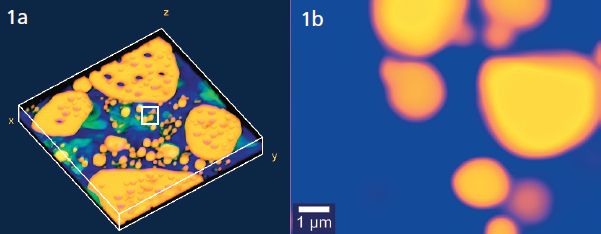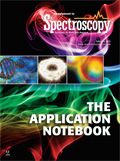Spectrally Highly-Resolved Automated Raman Imaging
Since Sir C.V. Raman discovered the Raman effect in the 1920s, it has become essential to many fields of research and industry.
An automated Raman imaging microscope can make the technique as user friendly as possible without compromising sensitivity, resolution, or measurement speed. Raman newcomers can operate such a system for even advanced imaging requirements along with experienced Raman spectrocopists running benchmark experiments.
Since Sir C.V. Raman discovered the Raman effect in the 1920s, it has become essential to many fields of research and industry. Raman spectroscopy and Raman imaging are being used for the identification of molecules and the determination of their distribution in a sample. For obtaining high-quality Raman images, instrument properties such as laser wavelength, power, position, and scan area of the sample or the beam path alignment must be optimized. With an automated system these essential parameters can be selected and specified via the software. The advantage of automation is obvious: calibration modes and imaging parameters are precisely coordinated, stored, and can be recalled for the next measurement with a mouse click.
High-Resolution Imaging Meets High-Resolution Spectroscopy
In the following study, an automated Raman imaging system (WITec apyron) was used to characterize an emulsion containing alkane, water, oil, and carbon tetrachloride (CCl4). CCl4 is a widely used reference substance in spectroscopy as some dedicated peak characteristics can only be revealed with a spectrometer capable of separating Raman lines at the highest spectral resolution. In this case, a WITec UHTS 600 spectrometer was attached to the Raman imaging system. The goal was to demonstrate that high-resolution spectroscopy can be performed with imaging through a user-friendly automated Raman microscope.

Figure 1: (a) 3D confocal Raman image of an alkane-water-oil-CCl4 emulsion. (b) Zoom-in image at the region indicated in Figure 1a.
Experimental Setup and Results
CCl4 was mixed in an alkane-water-oil emulsion, spread on a microscope slide, and sealed with a cover-slip. The Raman image (Figure 1a) illustrates that CCl4 is dissolved in the oil: green = alkane; blue = water; yellow = CCl4 + oil. (Image parameters: 200 ? 200 ? 20 pixels, 100 ? 100 ? 10 µm³ scan range; 0.06 s integration time per spectrum; excitation wavelength 532 nm.) A zoom-in image was acquired from the indicated area using the high spectral-resolution capabilities of the given Raman imaging setup. (Image parameters: 100 ? 100 pixels, 10 ? 10 µm², 0.08 s integration time per spectrum, UHTS 600 spectrometer, 1800 g/mm grating, room temperature.) Droplet structures at a smaller size than 1 µm can be imaged easily. When analyzing the acquired Raman spectra in detail (Figure 2) it is immediately apparent that the spectra of the oil/CCl4 droplets show the Raman peak at 460 wavenumbers consisting of three individual peaks clearly establishing the very high spectral performance of the system.
Figure 2: High-resolution Raman spectrum at 460 wavenumbers.

Conclusion
An automated Raman imaging system can provide ease of use paired with the highest spatial and spectral resolution. The different CCl4 Raman bands at 460 wavenumbers can be clearly resolved at room temperature. Automation does not compromise sensitivity and resolution or speed resolution performance. It even allows measurement settings or calibration routines to be adjusted and processed by the software without any manual involvement by the operator. Absolute excitation laser power determination in 0.1 mW steps ensures optimal laser power for the preservation of delicate samples and reproducibility in measurement conditions.
WITec GmbH
Lise-Meitner-Str. 6, 89081 Ulm, Germany
tel. +49 (0) 731 140 70-0, email: info@witec.de
Website: www.witec.de
